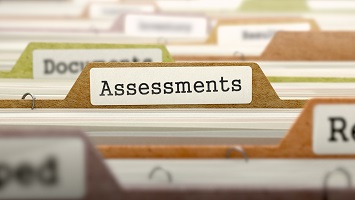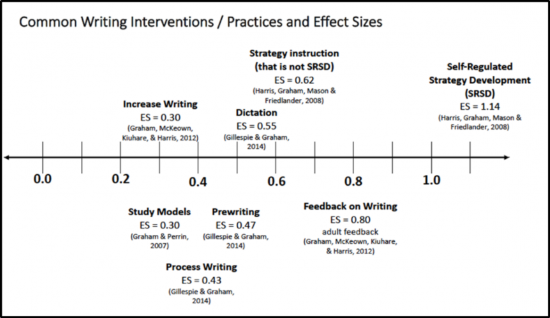Why should educators focus on fluency? Experts in the field have determined that reading fluency is the best overall measure of reading growth in first to sixth grades (Feldman, 2017). Fluency is the bridge between comprehension and decoding. If students are fluent readers, reading will not be drudgery but a fun exercise. When reading is perceived as fun, students are more likely to practice. Practice leads to growth and skill development.
How is reading fluency defined? Fluency is sometimes mistakenly identified with only reading rate but it is important to note that there are no high fives awarded for just speeding through a passage. Fluency is a combination of both reading rate and reading accuracy. Effective instruction must ensure learners become truly fluent readers rather than just fast ones. The end result is maximum understanding that in turn often results in increased motivation to read.
Most educators can describe what a non-fluent reader sounds like. Non-fluent readers are reading word-by word, characterized by slow, laborious reading out loud. They are often uncertain of sight words and generally ignore punctuation. Fluent reading should sound and flow like speech (Stahl and Kuhn, 2002) with expression, intonation, stress and pausing.
Assessment is key in determining student performance and progress. It is crucial to collect data regarding reading fluency to make informed instructional decisions. Oral Reading Fluency (ORF) is a fluency measure of rate plus accuracy that is quick, easy, and informative. ORF is analogous to a thermometer, as it indicates the general health and wellness of a student’s reading potential. An ORF assessment measure can serve as a screening tool that helps identify students who need additional support. In addition, ORF measures can serve as benchmarking tools that determine if a student is making sufficient reading fluency progress on an
on-going basis. See the School Tool above for a website that compiles ORF norms for grades one through six.
What improves reading fluency? The following is a summary of evidence-based practices that were compiled by Dr. Jan Hasbrouck, an educational consultant who has been an advisor to the Washington State and Texas reading initiatives, and who has co-authored numerous books for reading coaches:
* Oral, guided reading practice with teacher feedback and prompting for accuracy and rate
* Repeated reading, where students read the same short text multiple times in order to increase automaticity
* Wide reading of diverse genres
* Structured partner reading, where students read aloud to each other
* Explicit Direct Instruction in reading skills
Hasbrouck suggests that combining the proven strategies of modeling, repeated reading and progress monitoring is most effective.
Clearly, helping students develop reading fluency is an important component of the total literacy program. Instruction that strengthens students’ fluency skills will have an enduring effect resulting in strengthened reading comprehension and motivation. As educators know, it is particularly important that students do not lose their interest in reading as text complexity increases and as students move from “learning to read” to “reading to learn” in grades three and up. Fluency is a key factor that impacts student motivation and contributes to student achievement.
References:
Feldman, K. (2017). Effective Tier 2 Literacy Interventions K-5: Smart People-Smart Systems Smart programs; Presented at the WeTeachNYC Schools.
Hasbrouck,J. (2016). Reading Fluency for All K-8; Presented at the WeTeachNYC Schools.
Kuhn, M.R., Schwanenflugel, P.J., Meisinger, E.B. (2010), Aligning theory and assessment of reading fluency: A multidimensional view. Reading and Writing Quarterly, 25,4-32
National Institute of Child Health and Human Development. (2000). Report of the National Reading Panel. (NIH Publication No. 00-4769). Washington, DC: U.S. Government Printing office.
Stahl, S.A., & Kuhn, M.R. (2002). Center for the Improvement of Early Reading Achievement: Making it sound like language: Developing fluency. The Reading Teacher, 55 (6) , 582-584.



 Data-Driven Decision-Making
Data-Driven Decision-Making  Increasing Post-School Success through Interagency Collaboration
Increasing Post-School Success through Interagency Collaboration  How Can We Improve Deeper Learning for Students with Disabilities?
How Can We Improve Deeper Learning for Students with Disabilities?  Positive Classroom Management: Creating an Environment for Learning
Positive Classroom Management: Creating an Environment for Learning  Self-Determination Skills Empower Students of All Ages
Self-Determination Skills Empower Students of All Ages  Fidelity of Implementation: What is it and Why does it Matter?
Fidelity of Implementation: What is it and Why does it Matter?  Rethinking Classroom Assessment
Rethinking Classroom Assessment  A Three-Step Approach to Identifying Developmentally Appropriate Practices
A Three-Step Approach to Identifying Developmentally Appropriate Practices  Transforming Evidence-Based Practices into Usable Innovations: A Case Study with SRSD
Transforming Evidence-Based Practices into Usable Innovations: A Case Study with SRSD